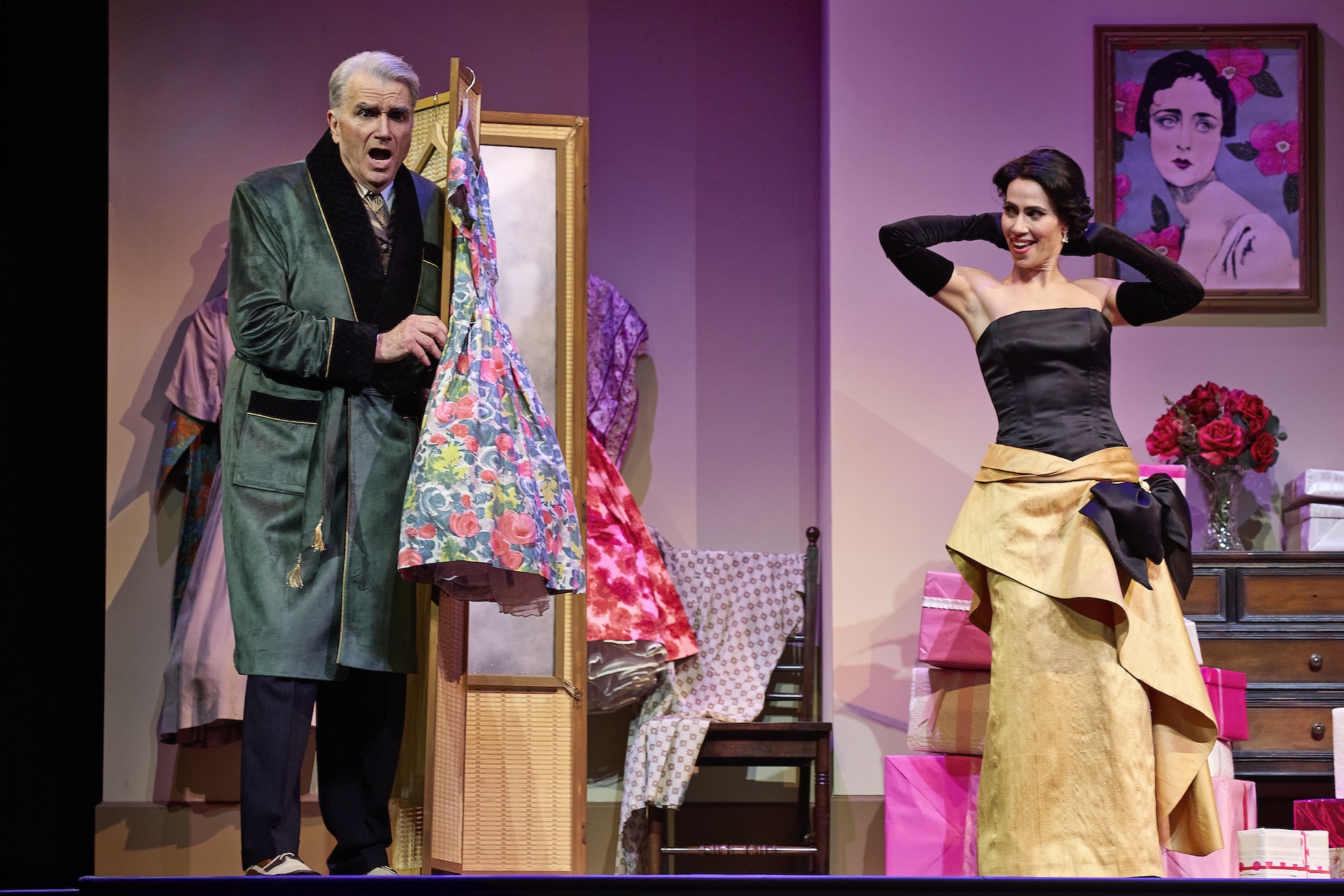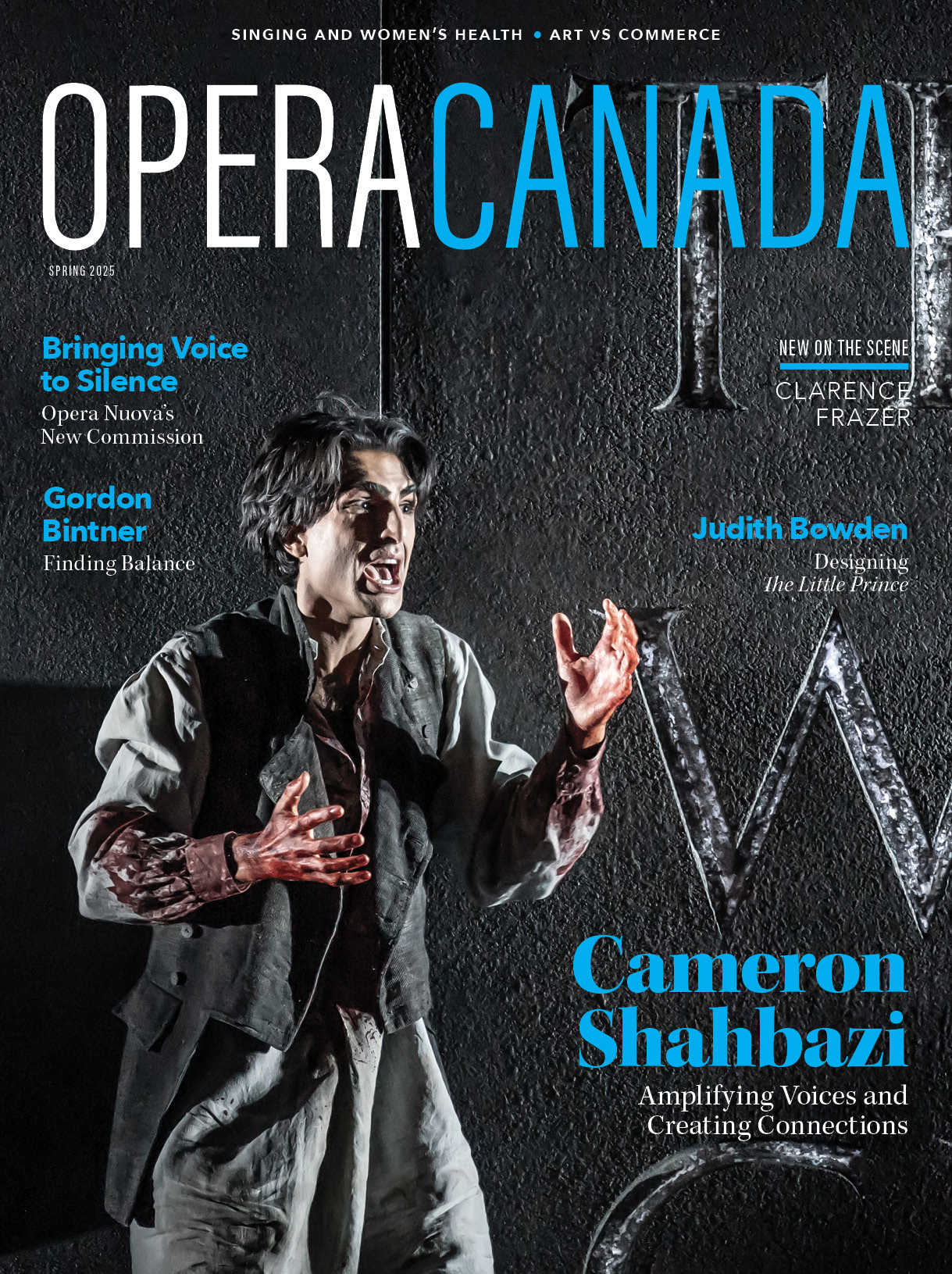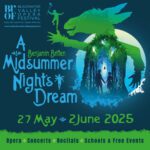It has been over 20 years since Calgary Opera performed Donizetti’s fun-filled Don Pasquale. With a plot rooted in the Rossini-era comedy, the opera is often presented in an updated version, the previous Calgary 2002 outing a riff on the old West. This time the updating was to a blend of images drawn from Italy and America during the 1950s, the title character presented as an aging silent-era film star, with Dr. Maletesta a composer-director of film. The story unfolds with sets and consumes that represent a film studio with attached dressing room.
Beyond its basic story, a re-telling of the age-old story of young lovers outwitting an older man through the aid of a friendly know-it-all, this production attempts a post-modernist twist in which different planes of realities are presented: one never quite knows what is to be taken as real or occupies a realm of fantasy or a-half-remembered past. For an audience to “get” the director’s take on the opera, it is essential that the audience be literate in 1950s film culture from Roman Holiday to Singin’ in the Rain. To this I would add Fellini’s Amarcord, especially for its time shifts and play with presented reality.
The film-set basis for the comedy was, I think, easily understood by the audience, although the more complex levels, presented as a counterpoint to the films just mentioned, seem to have had little engagement for some members of the audience. No matter. The opera is carried by one of Donizetti’s most attractive scores and comic action that does not outstay its welcome.
As with any opera of the period, it helps when the singers can handle the difficult music Donizetti wrote, especially for the lead soprano (Norina) and tenor (Ernesto). Here, this production was ably served.
In the opera’s only significant female role, Lucia Cesaroni as Norina has to carry much of the comedy and the hardest music. This she did with impressive success. Cesaroni has a voice of high quality that carries well, and she had no trouble with the constant florid singing the role requires. She was also adept as an actress, not only portraying the classic shrew, but also the very human woman in love with Ernesto. She was almost always on stage and needed a full box of dramatic tricks to bring variety to the stage action, which she did very well indeed.
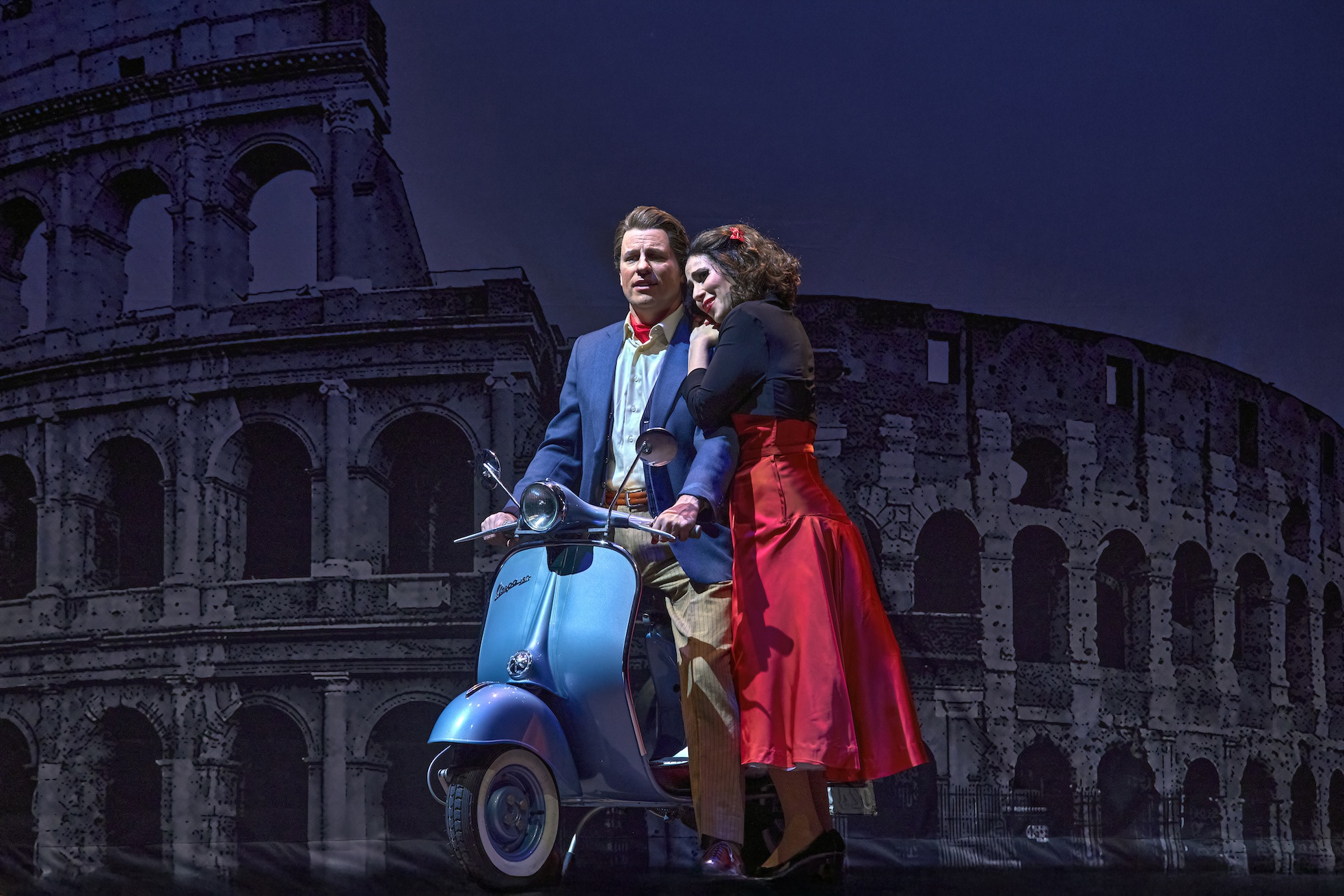
Photo Credit: HarderLee Photography
Ernesto and Norina (John Tessier and Lucia Cesaroni) share a Roman Holiday moment
As a one-time tenor (of sorts) myself, I always attend this opera with the question in mind: can the tenor actually sing this part? Written in mostly in the tenorino range, it also needs a tenor that can project, abilities not many tenors combine. For these requirements, there can be few tenors better than John Tessier, whose voice can effortlessly sit in a vocal range that, for most tenors, is effortful. He is the perfect Rossini-Donizetti tenor. On home turf vocally speaking, he delivered all that there is in the role, including the wonderful ballad scene.
Phillip Addis was Dr. (here: director) Malatesta, the man-about-town, whose strong baritone has just the right timbre and range for this always interesting part, much in the manner of Figaro in The Barber of Seville. John Fanning as Don Pasquale came out of retirement to sing his first Italian comic role in a long-distinguished career. Even if his singing had a few wobbles, the wobbles served to enhance the portrayal of character. Despite being officially retired, Fanning seems to have lost nothing of his dramatic chops and served the production excellently. His scenes with Cesaroni in her shrew persona were especially funny. Ryan Nauta, from the McPhee Artist Development Program, rounded out the singing cast, making the most of his modest role.
The imaginative set was designed by Scott Reid, a designer based in Calgary who has worked with the company on a number of projects. The two levels of dressing room and film stage worked well for the portrayal of the action and fitted nicely with Heather Moore’s period-appropriate costumes and David Fraser’s intelligent lighting. The chorus, with only a modest role in this opera, contributed substantially to the comic effect and sang with remarkable strength and command.
All the stage business has to be managed by the stage director, in this case Stefania Panighini, a director familiar with the requirements of Italian comedy and knowledgeable about film through her studies at Italy’s famous center for film. Her experience with comedy was evident everywhere, from the shaping of the big scenes to telling small details. A particularly good moment was the Rossini-style quartet ensemble where time stops. This stock device is often awkward to integrate into otherwise rapid action, and here it was especially smoothly handled.
The Calgary Philharmonic Orchestra, led on this occasion by Jacques Lacombe, produced a sprightly played account of the score with excellent solo bits (trumpet, especially) as required. Tempos were well-judged – quick, but not too quick – and the settled quality of the orchestral playing conveyed the impression that the musicians were comfortable with the direction from the pit.
The production sent the audience home with smiles on their faces, especially welcome since the weather outside was 20 degrees below zero. This Don Pasquale well filled its roles in founder Brian Hanson’s programming formula of something old, something new, something light.
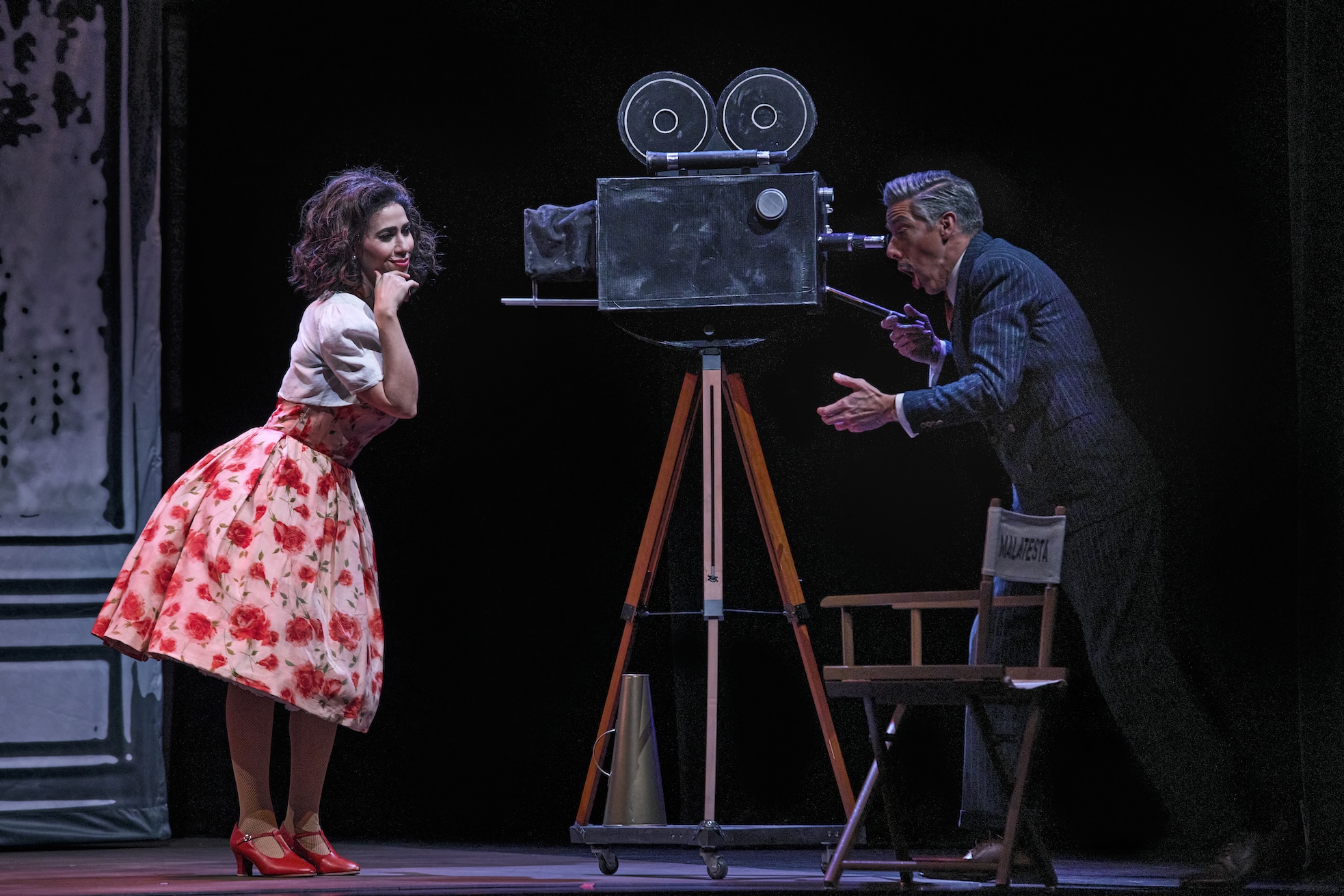
Photo Credit: HarderLee Photography
Dr. Malatesta (Phillip Addis) plans for his next screen success with Norina (Lucia Cesaroni)
Opera Canada depends on the generous contributions of its supporters to bring readers outstanding, in-depth coverage of opera in Canada and beyond. Please consider subscribing or donating today.
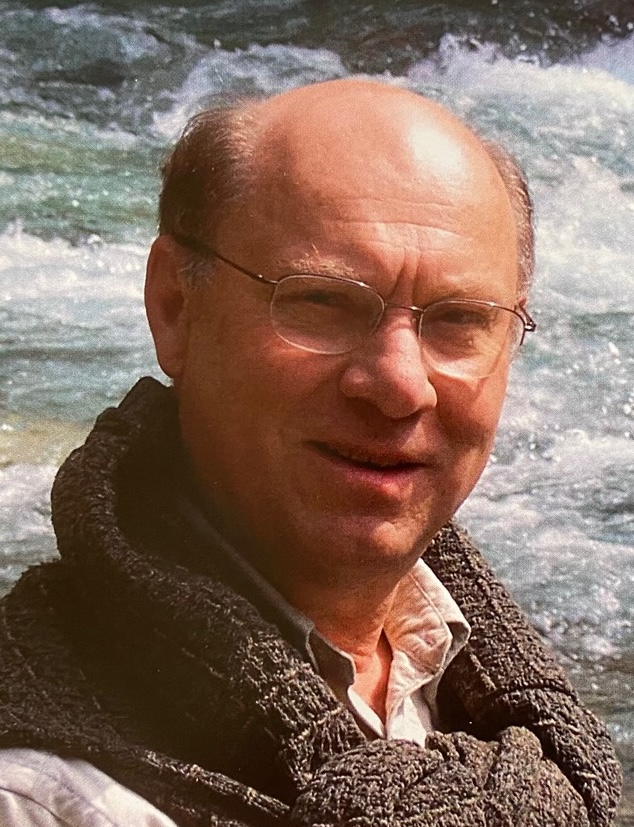
Before his recent retirement, Kenneth DeLong was for many years a professor music history at the University of Calgary, where he regularly taught courses in opera. Youthful indiscretions included singing in the opera chorus for a number of operas and serving as the pianist/coach for others. He has also been the music reviewer for The Calgary Herald for many years.

